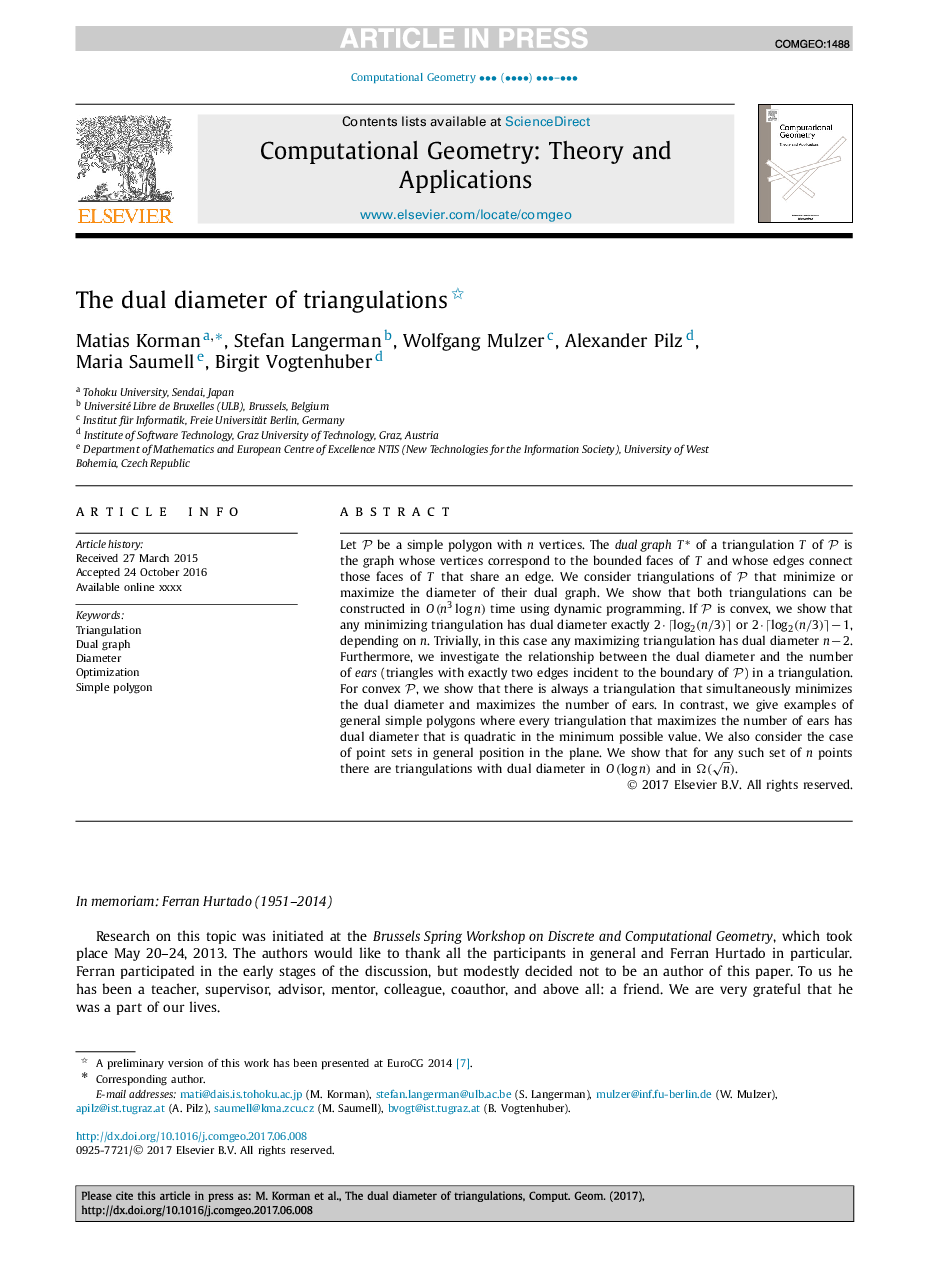| Article ID | Journal | Published Year | Pages | File Type |
|---|---|---|---|---|
| 6868502 | Computational Geometry | 2018 | 10 Pages |
Abstract
Let P be a simple polygon with n vertices. The dual graphTâ of a triangulation T of P is the graph whose vertices correspond to the bounded faces of T and whose edges connect those faces of T that share an edge. We consider triangulations of P that minimize or maximize the diameter of their dual graph. We show that both triangulations can be constructed in O(n3logâ¡n) time using dynamic programming. If P is convex, we show that any minimizing triangulation has dual diameter exactly 2â
âlog2â¡(n/3)â or 2â
âlog2â¡(n/3)ââ1, depending on n. Trivially, in this case any maximizing triangulation has dual diameter nâ2. Furthermore, we investigate the relationship between the dual diameter and the number of ears (triangles with exactly two edges incident to the boundary of P) in a triangulation. For convex P, we show that there is always a triangulation that simultaneously minimizes the dual diameter and maximizes the number of ears. In contrast, we give examples of general simple polygons where every triangulation that maximizes the number of ears has dual diameter that is quadratic in the minimum possible value. We also consider the case of point sets in general position in the plane. We show that for any such set of n points there are triangulations with dual diameter in O(logâ¡n) and in Ω(n).
Related Topics
Physical Sciences and Engineering
Computer Science
Computational Theory and Mathematics
Authors
Matias Korman, Stefan Langerman, Wolfgang Mulzer, Alexander Pilz, Maria Saumell, Birgit Vogtenhuber,
